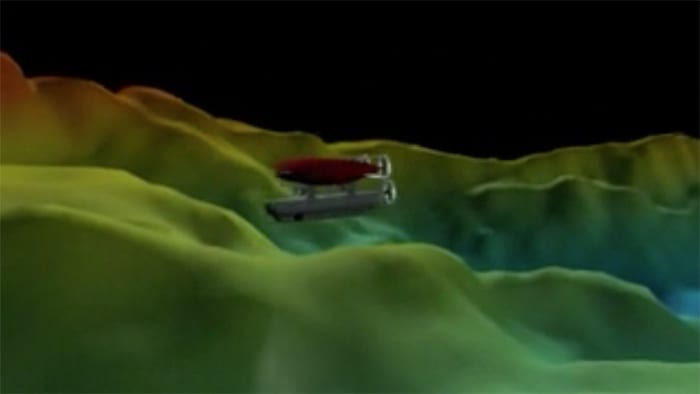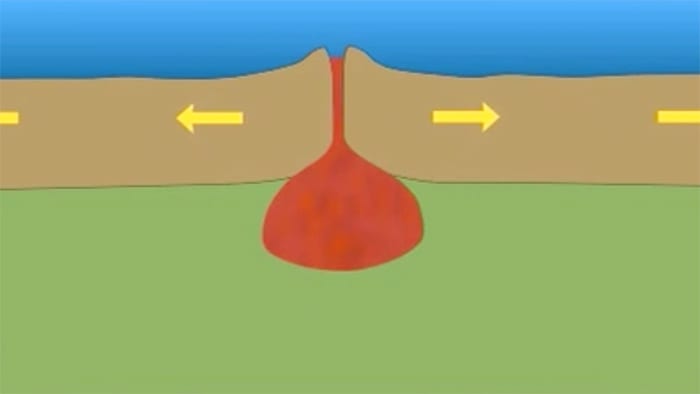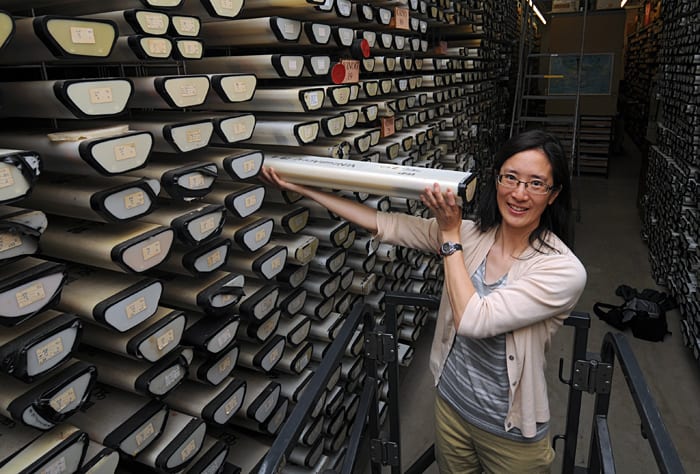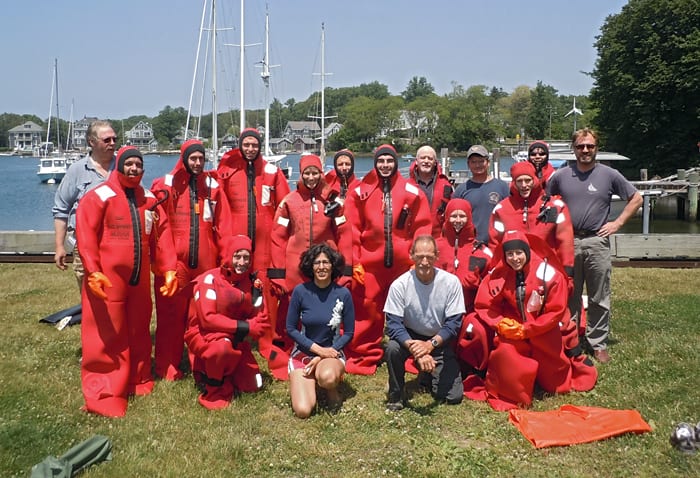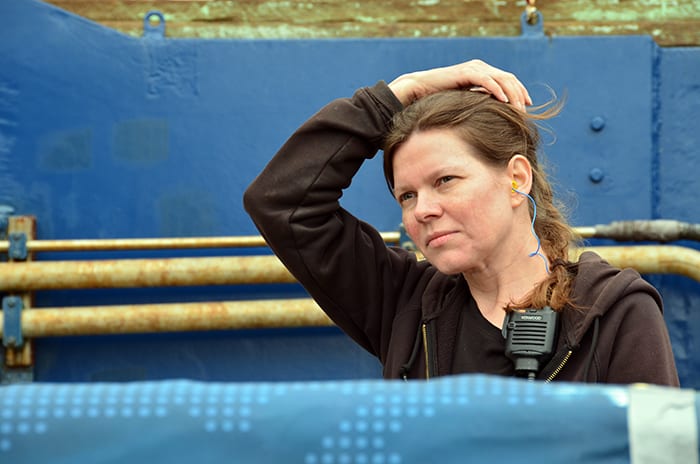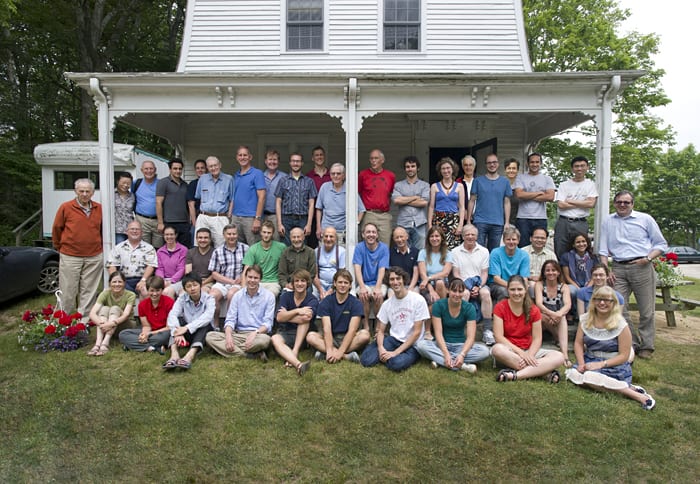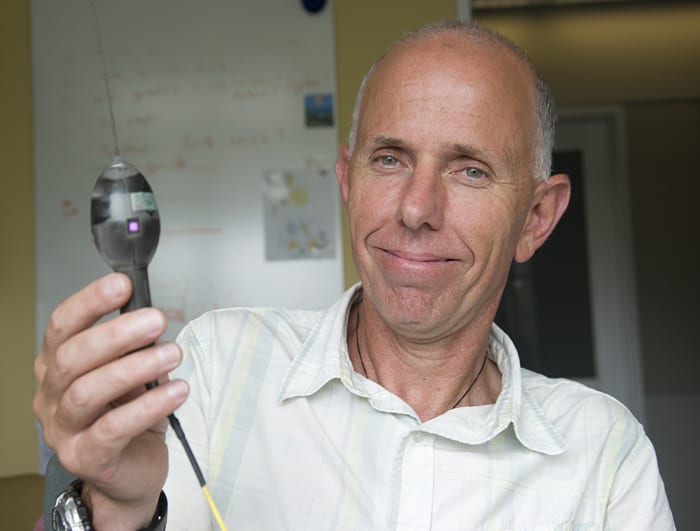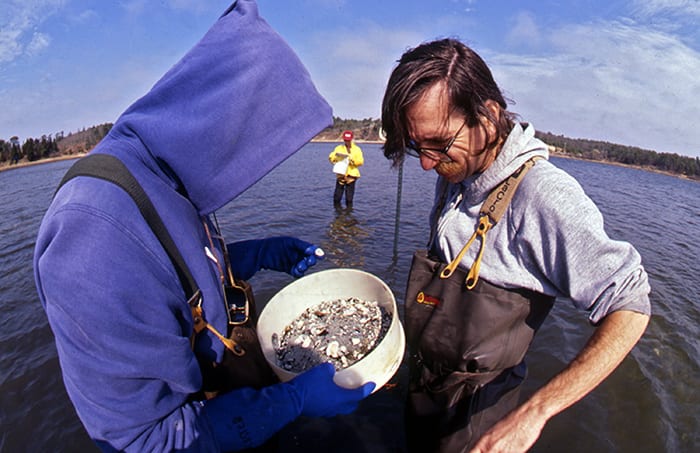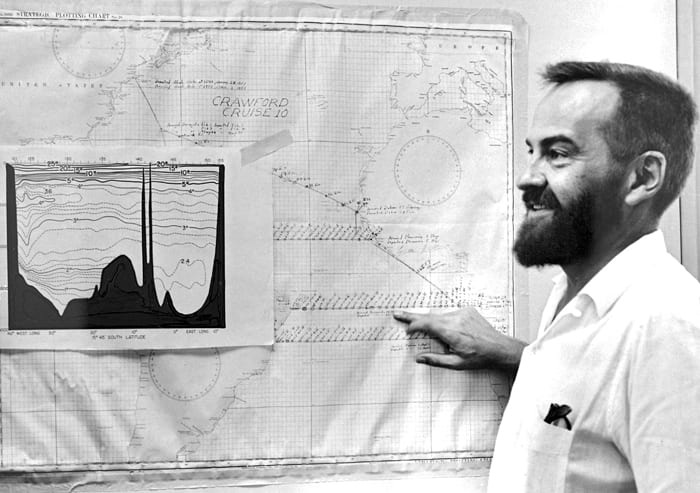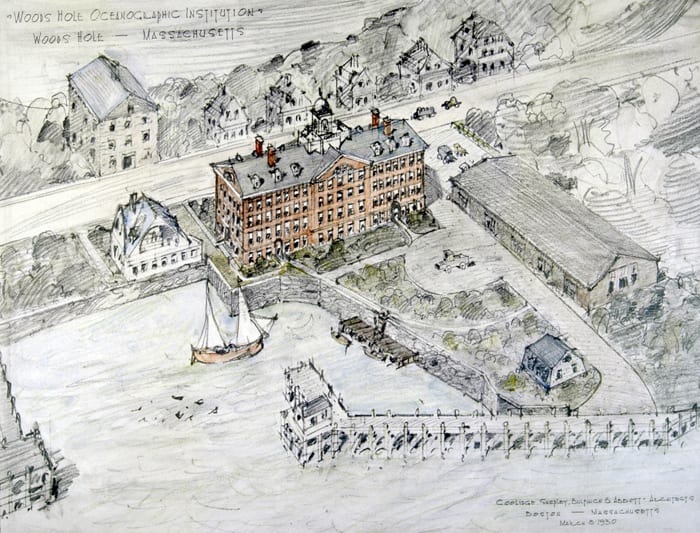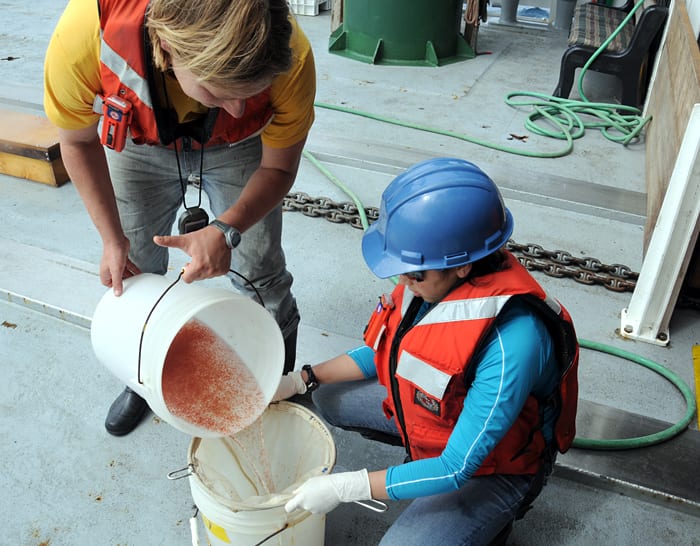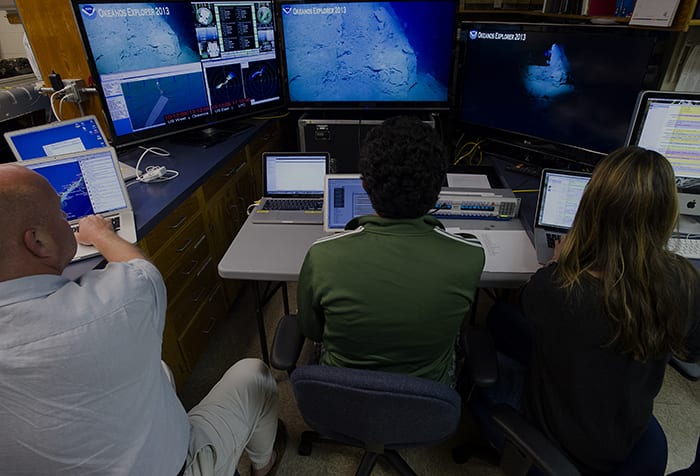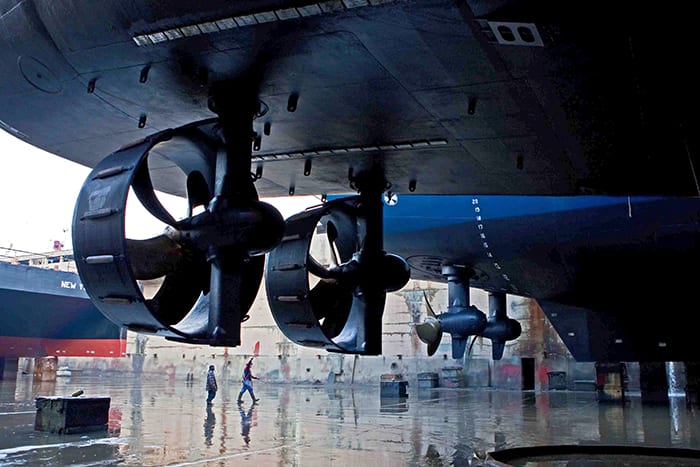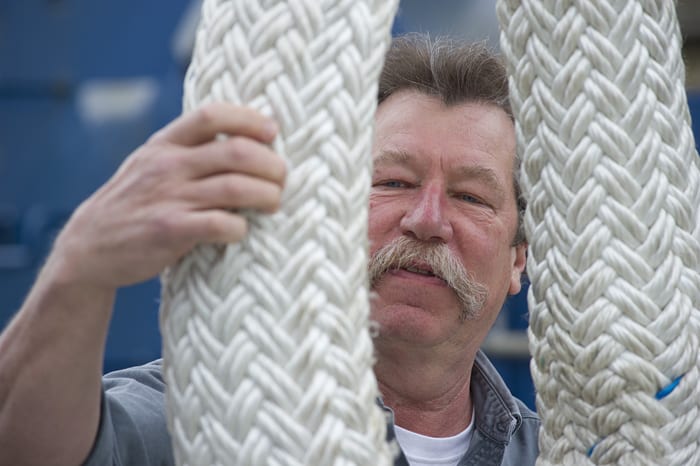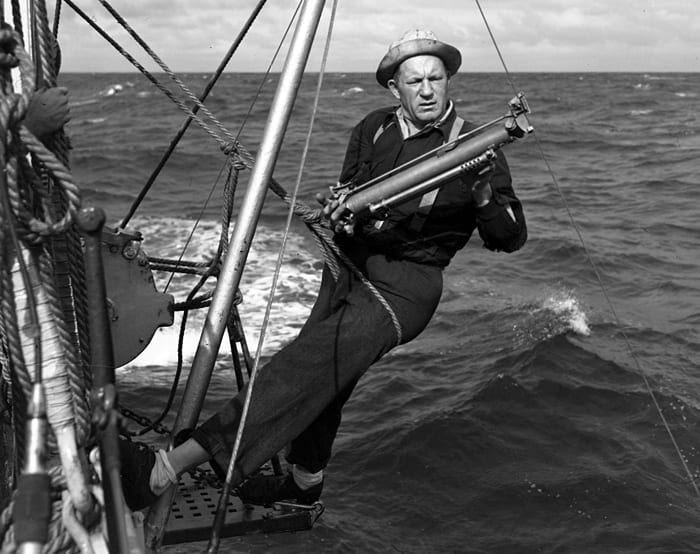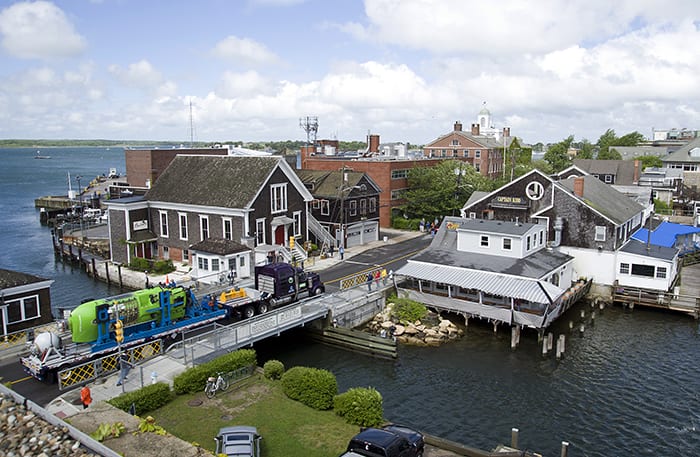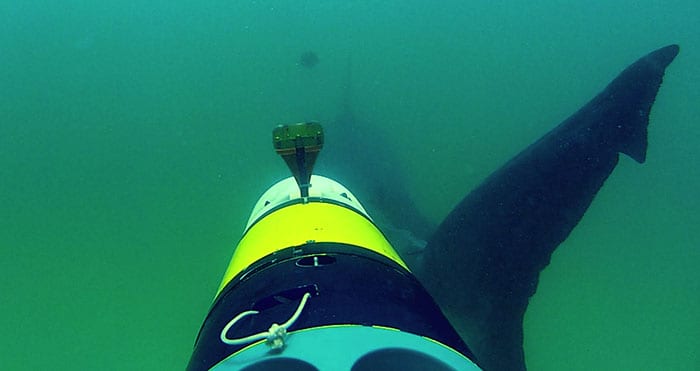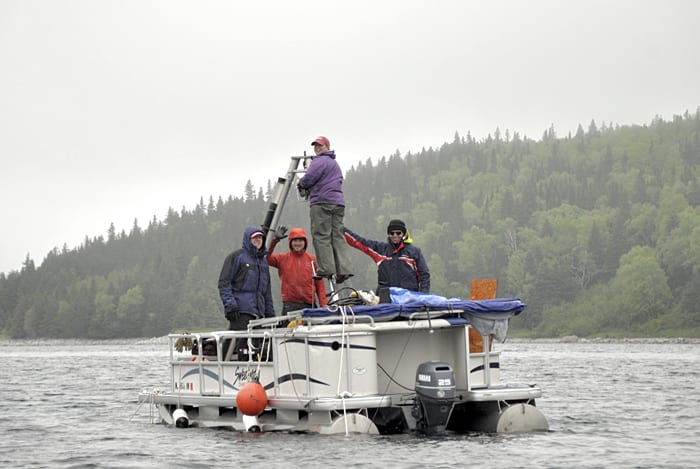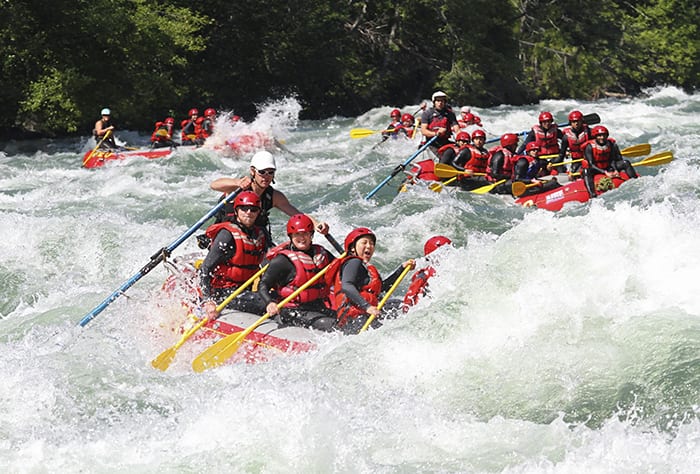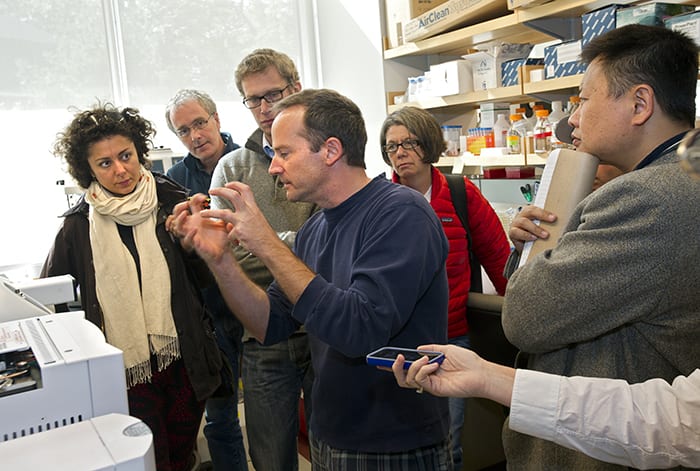Multimedia
Mooring Master
Few people know more about putting moorings into the ocean and getting them back than Scott Worrilow, who arrived at WHOI in 1978 and today is head of the Sub-Surface…
Read MoreABE Animation
See how ABE autonomously “mows the lawn” over the seafloor, using sonar to create high-resolution maps while maintaining constant altitude and precise navigation.
Read MoreCreating New Ocean Crust
Watch this animation to see how new ocean crust forms at mid-ocean ridges
Read MoreClearing the Waters
WHOI chemist Phoebe Lam retrieves sediment core sample GGC-37, originally extracted by WHOI’s Lloyd Keigwin in 1991, from the Seafloor Samples Laboratory. Sediment cores present geological information and are obtained when scientists drill long…
Read MoreDressed for Success
Students in the 2013 small boat safety class at WHOI pose in buoyant survival suits designed to keep them dry, warm, and afloat in the event of an accident at…
Read MoreNew Chief
Monica Hill relaxes for a moment before R/V Atlantis pulls away from the WHOI dock on May 25, on what would be Hill’s first cruise as Chief Engineer. The ship…
Read MorePilots of the Deep
Long-finned pilot whales roam in large pods with hundreds of individuals and cluster in smaller groups like this one, photographed in the Alboran Sea during a WHOI research expedition in…
Read MoreFluid Dynamics
Many people consider the porch at Walsh Cottage at WHOI to be a sacred place. Each summer since 1959, some of the greatest oceanographers, physicists, and mathematicians have gathered here…
Read MoreTagging Sharks
To reveal the hidden lives of sharks, scientists like Simon Thorrold in the WHOI Fish Ecology Laboratory are using Pop-up Satellite Archival Transmitting tags. The tags attach to sharks, recording…
Read MoreSharkCam
Wading into Work
“Fieldwork” sometimes means get-into-the-water-work. Here, WHOI researchers Bruce Lancaster, Jim Weinberg, and Dale Leavitt (left to right) stand on tidal flats of Little Buttermilk Bay in Bourne, Mass., collecting soft…
Read MoreLooking Deep
WHOI’s Fritz Fuglister presents a temperature profile obtained with a bathythermograph, an instrument that measures temperature and depth when dropped from or towed behind a ship. BTs were developed at…
Read MoreBuilding for the Future
Named for WHOI’s first director, the Bigelow Lab on Water St. in Woods Hole, Mass., was WHOI’s first building. Plans called for “a brick building, 135 feet long and 50…
Read MoreRadiation Monitors
Three months after the 2011 nuclear plant disaster in Fukushima, Japan, WHOI marine chemist Ken Buesseler led an expedition to the Northwest Pacific to investigate the extent and impacts of…
Read MoreTuning In
WHOI biologist Tim Shank, JP student Santiago Herrera, and research scientist Taylor Heyl (left to right) monitor live video feeds the Okeanos Explorer in WHOI’s Redfield Laboratory. From July through August,…
Read MoreGetting to the Bottom of Things
WHOI coastal geologist Jeff Donnelly analyzes hurricane activity through the traces they leave behind. In summer 2013 Donnelly and his lab members returned to a Cape Cod coastal pond that…
Read MoreStart Your Engines
In December 2012, both WHOI-operated research vessels, R/V Knorr (foreground) and Atlantis completed a scheduled maintenance period in a South Carolina drydock. After returning to WHOI, Knorr returned to its…
Read MoreNeed a Lift?
The recent upgrade of the human occupied vehicle Alvin added enough weight to the vehicle that the equipment used to launch and recover it from R/V Atlantis also had to…
Read MoreDrops in the Ocean
WHOI technician Arnold Clarke conducts a “hydrographic station” aboard the original WHOI research vessel Atlantis, most likely in the late 1940s. A hydrographic station is a basic operation in oceanography,…
Read MoreComing Home
On June 14, the submersible DEEPSEA CHALLENGER completed a cross-country trip from California to Cape Cod, arriving just as the sun broke through the clouds in Woods Hole (shown here).…
Read MoreREMUS SharkCam deployed off Chatham, Mass., in 2012
New Found Cores
WHOI’s Jeff Donnelly, Michael Toomey, Andrea Hawkes, and Richard Sullivan (left to right) gathered data from the R/V Arenaria in July in the waters of Newfoundland, Canada, to reconstruct a…
Read MoreFun on the Fraser
WHOI’s Geodynamics Program fosters interdisciplinary research in the earth sciences among faculty, students and postdoctoral fellows. It is centered around an annual spring semester seminar series and a study tour…
Read MoreEducating Journalists
Every year, WHOI scientists host a daylong visit by members of the Knight Science Journalism Program at MIT, which offers full-year fellowships to journalists to increase their understanding of science,…
Read More

